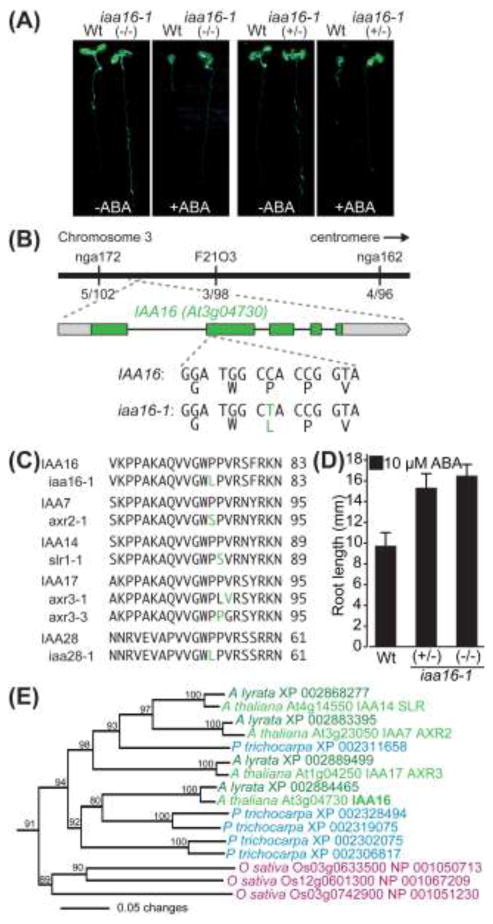Fig. 1.
A gain-of-function mutation in IAA16 results in ABA resistance. a Photographs of Col-0 (Wt) and homozygous (−/−) or heterozygous (+/−) iaa16-1 seedlings 4 d after transfer of 4-d-old seedlings to media with or without 10 μM ABA. b Recombination mapping with the indicated markers localized the AR269 lesion to a region on Chromosome 3. Sequencing of the IAA16 (At3g04730) gene from AR269 DNA revealed a C-to-T mutation at position +860 from the IAA16 initiator codon that results in a Pro65-to-Leu substitution in domain II of IAA16. c The Pro65-to-Leu substitution in domain II of IAA16 is similar to gain-of-function mutations found in domain II of IAA7, IAA14, IAA17, and IAA28. Numbers on the right indicate the amino acid position of the last residue shown. d The iaa16-1 allele is dominant for ABA resistance. Mean root lengths (+SE; n ≥ 16) of Col-0 (Wt) and homozygous (−/−) or heterozygous (+/−) iaa16-1 seedlings 4 d after transfer of 4-d-old seedlings to medium supplemented with 10 μM ABA. e Phylogenetic tree, excised from the larger analysis of Aux/IAA proteins shown in Fig. 3, of Arabidopsis thaliana IAA16, IAA14/SLR, IAA7/AXR2, IAA17/AXR3, and relatives from Arabidopsis lyrata, Oryza sativa, and Populus trichocarpa.

